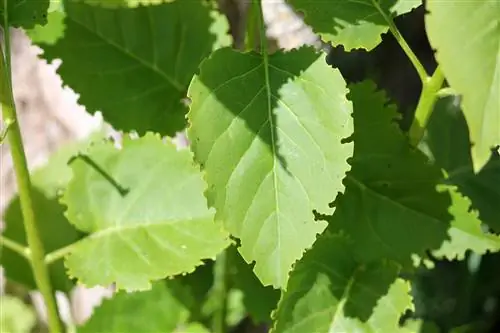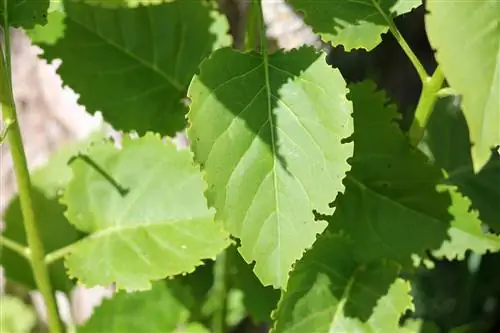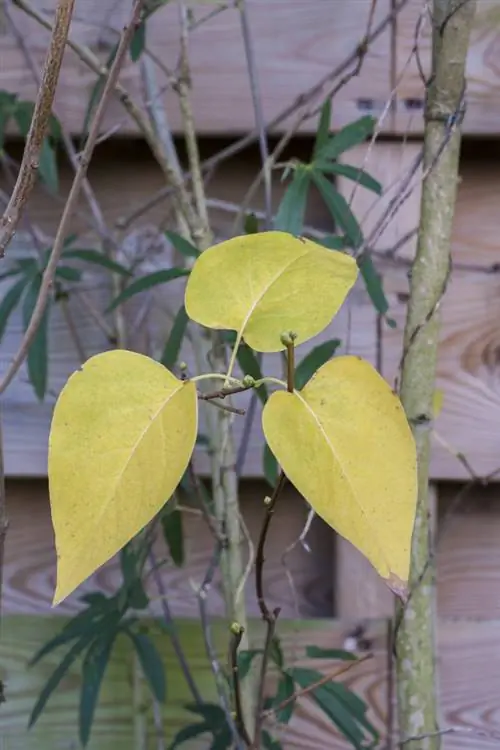- Author admin [email protected].
- Public 2023-12-16 16:46.
- Last modified 2025-01-23 11:22.
Pests that leave holes in the leaves can seriously spoil the joy of beautifully flowering and fragrant lilac bushes. In this guide you will find out which insects cause pitting and what you can do about it.

Why do lilacs have holes in their leaves?
It can befeeding holesof thelilac weevilor thecommon earwig. The caterpillars of the now rare swallowtail also feed on lilac leaves. All of these insects can be controlled relatively easily if necessary.
How do I recognize black weevils and how do I fight the beetles?
The lilac weevil (Otiorhynchus smreczynskii) leaves behind a clear damage pattern as it primarily eats the leaves of the lilacin a circle from the edge The beetles, which are around five millimeters in size, have a brownish color. Since they are nocturnal and stay at the bottom of the bushes during the day, you will almost never see these insects.
The damage caused by feeding on lilacs is usually insignificant, so it is not necessary to control the black weevil. The larvae living in the root system also cause only minor damage.
Do earworms on lilacs have to be controlled?
Despite the fact that it nibbles holes in the leaves of the lilac,shouldthe common earwig (Forficula auricularia)not be controlled. Because these little animals Aphids taste much better than plants and are also extremely useful.
You can take advantage of this:
- Fill a flower pot with straw.
- Hang it in the lilac with the opening facing down.
- After a few days, remove the pot and place it near plants suffering from aphid infestation.
Should I control swallowtail caterpillars?
Although the swallowtail population has recovered somewhat in recent years, you shouldleave the caterpillars on the lilac. Control is also not necessary as the feeding damage does not cause lasting damage to the flowering shrub.
Swallowtail caterpillars are initially gray-black with a white saddle patch. With each molt they become lighter until at the end of the caterpillar development they have a striking green-orange color.
Tip
Infestation with lilac leaf miners
If the lilac leaves do not have holes, but rather damage to the underside of the leaves and linear discoloration, this is the typical damage caused by the lilac leaf leaf miner. In this case too, the use of insecticides is rarely necessary. It is sufficient to cut off the affected parts of the plant and dispose of them with household waste.






